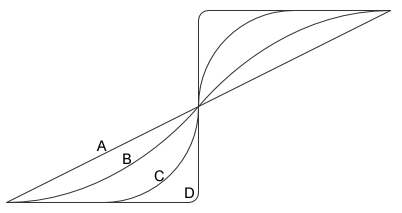But my point is that it is not the radius of the bend that make the major difference ...it is the reduction in length when you are looking at very long radius bends.
Most of the time when this comes up we are talking about the comparison of the pulling force needed to pull around a "standard" bend and a 3 or 4 or even 5' sweep bend. In those cases, there is very little length change, and there will be very little difference in the required pulling force. The long sweep is used to prevent the sidewall forces from damaging the cable.
My personal experience with very long sweep bends in smaller conduit and pulling by hand is that the very long sweeps seem to pull harder. The long sweeps I am talking about are concentric bends on a horizontal rack. In some cases it took more than 10' of conduit to make the 90. I never used any type of tension meter, but those types of pulls seemed to require more force than runs with standard bends.


